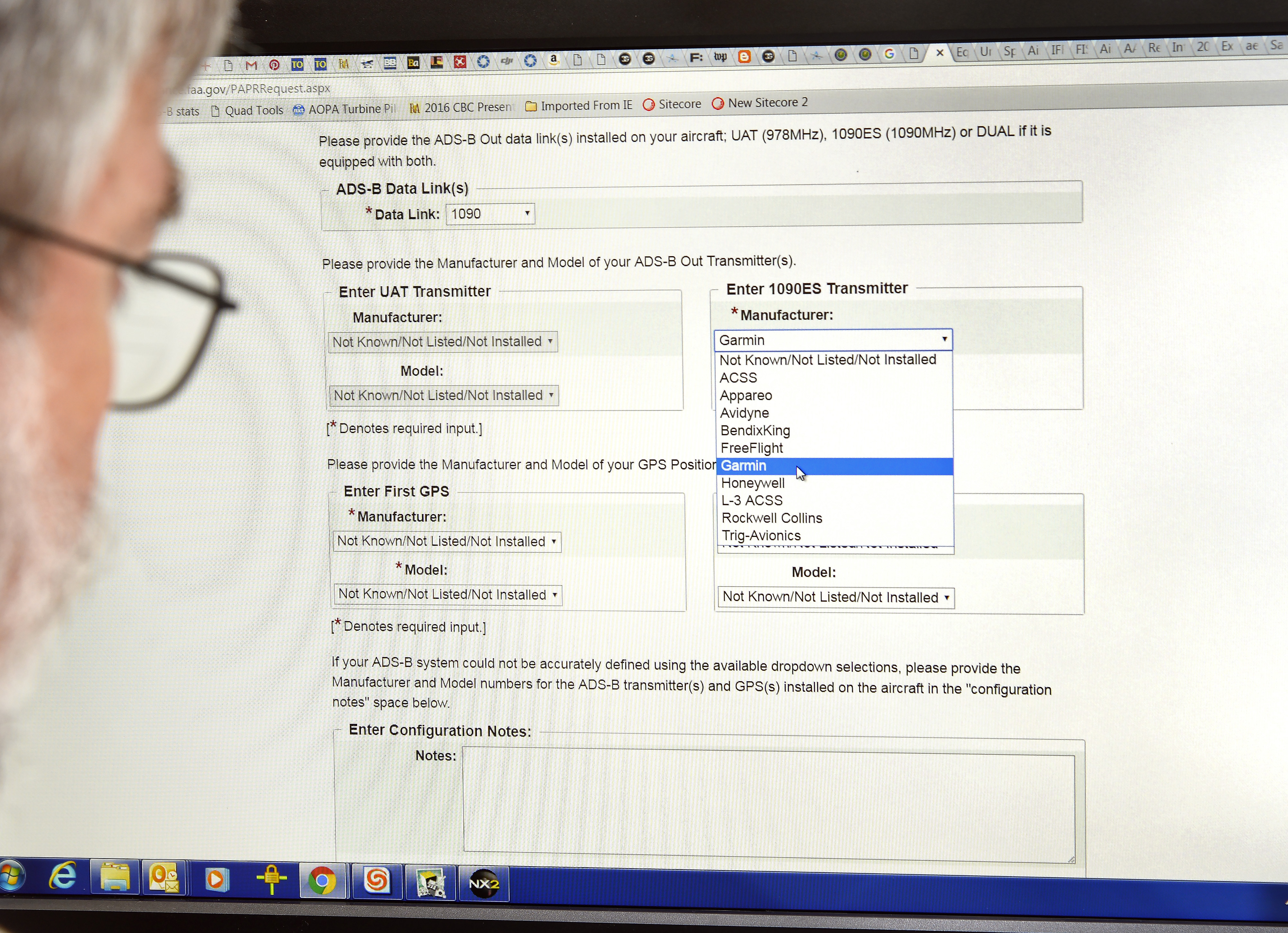FAA improves Performance Monitor
New website provides ADS-B reports faster
 Previously, requests for an ADS-B Aircraft Operation Compliance Report were submitted by email and the reports were generated manually. Now, through the online Public ADS-B Performance Report Request web page, aircraft owners can complete a few data fields, in many cases select aircraft equipment from drop-down menus, and submit a request in minutes.
Previously, requests for an ADS-B Aircraft Operation Compliance Report were submitted by email and the reports were generated manually. Now, through the online Public ADS-B Performance Report Request web page, aircraft owners can complete a few data fields, in many cases select aircraft equipment from drop-down menus, and submit a request in minutes.
ADS-B, which uses satellites instead of ground-based radar to determine aircraft location, is a key technology behind the FAA’s Next Generation Air Traffic Control System. The FAA has mandated ADS-B Out equipage beginning Jan. 1, 2020, for operations in most airspace where a transponder is required today. An ADS-B performance report assures an aircraft owner or operator that the installed ADS-B Out equipment is working properly.
From there, enter the aircraft’s tail number, your name and address, and the ADS-B datalink installed on the aircraft (978 UAT or 1090ES). That selection will then allow you to select the manufacturer and model of your ADS-B Out hardware (selecting 978 UAT will lock out the fields for entering 1090ES transmitter data, and vice versa). If your ADS-B hardware does not appear in the drop-down menus, it may be entered manually in the Configuration Notes field. Click a box to prove you’re not a robot, hit the Submit button, and wait for the report to arrive in your email inbox.
The online system has officially replaced the previous email service, said James Marks, who leads the FAA’s ADS-B Focus Team. Reports are currently available from Dec. 19, 2015, to present, he noted.
Shortly after submitting your request, you should receive an email with a six-page PDF file attached—and the last two pages are “intentionally left blank.” Marks said, “We opted to remove some technical data from the public reports that provide little value to aircraft owners, to improve request-processing efficiency.”
Anything on the report highlighted in red indicates that the aircraft’s ADS-B Out system did not meet the corresponding performance requirement. Additional information about the items in the report are available in the online user’s guide, which the FAA said is a living document. “It will evolve based on feedback from users, manufacturers, and changes to the Performance Monitor and FAA policy,” Marks said.
The second part of the user’s guide provides general guidance on possible causes of common ADS-B performance issues. It suggests possible causes for fault indications that should be starting points for troubleshooting the problem.



